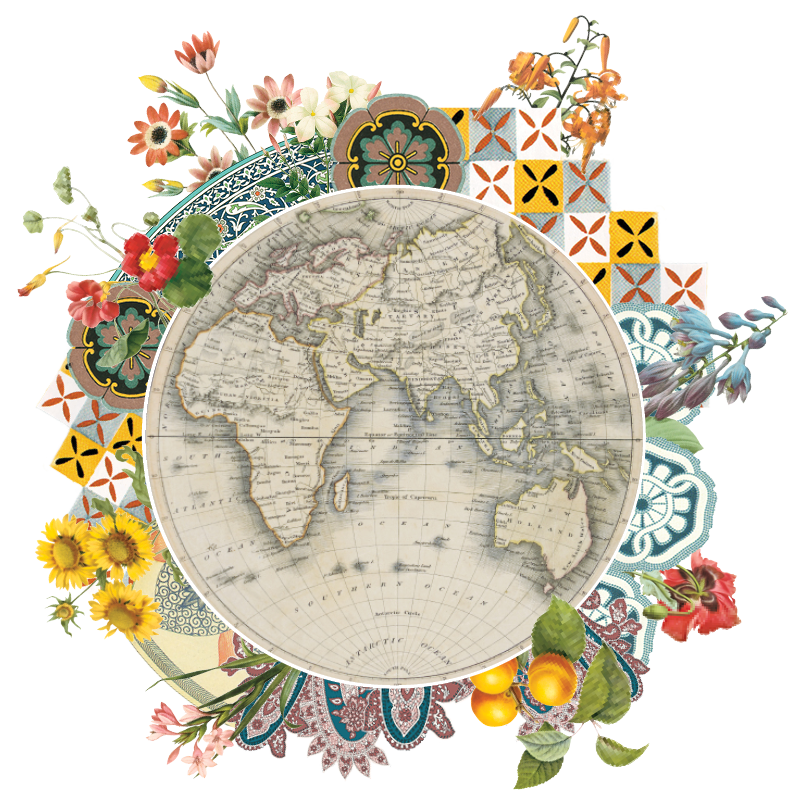Follow Your Nose
Rebecca Misner on the varied, sometimes surprising stories and histories of flower aromas most synonymous with a place.
- Category:
- Voices
- Words By:
- Rebecca Misner
- Published:
- September 06, 2018
A sensory experience, particularly one tied to smell, can immediately transport us to another time and place. Perhaps the most powerful of all the memory-triggering smells are those associated with travel, when our senses are on high alert and we’re wide open to experiencing the new. And while every destination has a scent or a multitude of scents (pine and damp earth in Portland, Oregon; elote or roasting corn in Mexico City) none are quite as memorable as those places tied to the aroma of a certain flower.

Magnolia Grandiflora – Southern United States
It’s nearly impossible to think about the American south without conjuring up an image of the stately Magnolia grandiflora, which grows from North Carolina south to Florida and as far west as Texas. The tree’s snow-white, saucer-sized blooms with their sweet, almost-lemony scent are as much a part of sticky, sultry, southern summers as sweet iced tea and front porches. True southern natives, Magnolias date back 100 million years—in fact, they’re so ancient, they pre-dated bees and had to rely on beetles for pollination. As such, their leaves and flowers are extremely tough to avoid being chomped by beetles. The bloom’s sweet yet resilient nature is, you guessed it, where the term “steel magnolia” to describe a strong but feminine southern woman comes from.

Bergamot Blossoms – Calabria
There’s no shortage of heavenly scents tied to Italy—garlic hitting hissingly hot olive oil; espresso being made the right way; just-charred-enough pizza being pulled from a brick oven. But the most divine smell has to be the perfume of bergamot blossoms that fills the air in springtime in Calabria, the sunbaked, Tyrrhenian Sea-washed region at the “toe” of Italy’s boot-shaped peninsula. Its fruit, which is about the size of an orange and the color of a lime, is too bitter to eat, but its rind is the secret ingredient in Earl Grey tea and its essential oil is what makes high-end perfumes and colognes so beguiling. Bergamot flowers have the same addictive, ambrosial, honeyed scent as orange blossoms, but—fittingly, considering the harsh-but-beautiful Calabrian landscape and the strong people that call it home—there’s a hint of salinity and spice that prevents the scent from being too sweet.

The Rose of Damascus — Syria
This bloom is one of the oldest and most beloved in Western civilization. It has been steadily imported into Europe since the Crusades, Shakespeare memorialized it in Sonnet 130 and Twelfth Night, it’s a go-to for French perfume houses looking for the deepest rose scent, and Middle Eastern dishes and desserts wouldn’t be nearly as special without the addition of its dried and candied petals or its distilled water. Damask roses are grown in Turkey, Bulgaria and Iran, but those in the know will tell you that the purest, most sweetly scented blooms have to be grown on the land in and around the Syrian capital of Damascus. The recent war has significantly impacted the region’s ability to farm roses and extract the essential oil (it takes about three tons of rose petals to make two pounds of essential oil). Hopefully, one day soon, the damask rose will once again be a source of livelihood and pride for the people of Syria.

Common Hawthorn — Scotland
Visit Scotland in last throws of spring and you’ll find that the Common Hawthorn that lines neighborhoods and covers hillsides has burst into masses of creamy white blossoms, filling the air with its complex, heady aroma and giving the thorny shrub its more poetic name, Maytree. In the British Isles, Hawthorn has long been a sacred, symbolic tree imbued with magic and myth. The ancient Druids believed that fairies lived in the shrubs while young couples desiring a happy, fertile marriage would dance around it at their wedding. Sprigs were tied to newborns’ cradles to ward off evil and to decorate the maypole at Beltrane celebrations. And while the shrub is perhaps not worshipped the way it once was, its bloom and sweet smell signify warm weather is here to stay, which, after a damp Scottish winter, is magical indeed.

Hawaiian Pikake
If paradise had a scent, it might very well be the way Hawaii smells first thing in the morning. It’s a little tricky to parse exactly what smells so insanely good when the islands are covered with heavenly smelling gardenia, ginger, tuberose, and plumeria. But, if you follow your nose, it’ll lead you to pikake. Its petite, white, star-shaped blooms aren’t as show-stopping as hibiscus or as a stately as bird of paradise, but its tiny blooms are powerful and give off the sweetest, most sensual perfume. The flower’s Hawaiian name, so the story goes, comes from Princess Kaʻiulani, who loved peacocks so much that her favorite flower was called pikake, Hawaiian for peacock.

Rebecca Misner is a classics scholar, former lawyer, yoga instructor, creator of natural beauty products, and senior editor at Conde Nast Traveler.